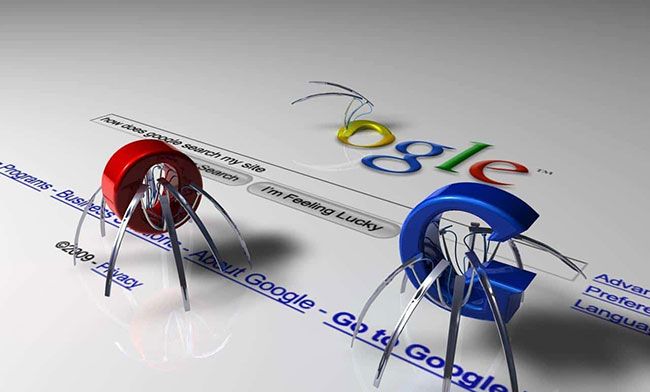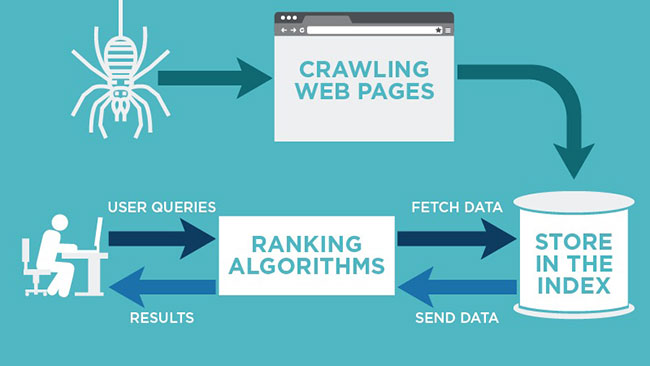What is a crawl? What is index?
SEO is a very vast field. To fully understand SEO, we should know some basic SEO terms.
Crawl and index are two very common terms in SEO. If you've been digging through the web for a while, you've probably heard these words. Crawl and index are two terms that the whole web world depends on.
Let's define and find out some in-depth information about crawl and index through the following article.

What is a crawl?
Crawl basically means following a path. In the SEO world, crawling means tracking links and collecting data on websites. When bots come to your site (or any other site), they also track other linked pages on your website.
This is one reason why it's important to create sitemaps, because they contain all the links in blogs and Google bots can use them to look deeper into a website.
What is index?
Indexing is the process of adding web pages to Google Search.
Depending on which meta tag you have used (index or no-index), Google will crawl and index your pages. The no-index tag means that the page will not be added to the web search index.
By default, every post and WordPress site is indexed.
In order to rank higher in search engines, it is a smart idea to just index important parts of your blog or website.
Do not index unnecessary things like tags, categories and all other useless pages.
Factors affecting the crawl process
There are millions of websites on this earth. Is everyone happy with the crawl and index speed? The answer is no! Most people are constantly wondering why their posts are not indexed.
Let's take a look at some key factors that play an important role in crawling and indexing.

Backlink
The more backlinks you have, the more trustworthy and reputable your site in the eyes of search engines. If you have good rankings but don't get any backlinks to the site, search engines may assume that you have low quality content.
Internal linking
There has been a lot of discussion regarding internal linking (also known as deep links). People even suggest using the same anchor text in posts, as it helps to gather deep data about a website.
It is important to remember that internal linking is a good thing, not only for SEO but also to keep users active on the site.
XML sitemap
The moment you set up a website in WordPress, you should use XML sitemaps so that sitemaps can be created automatically. In this way, Google is notified that your site has been updated and will want to crawl it.
Duplicate content
This can adversely affect your site. Please try not to have any duplicate content on the site.
Create friendly URLs
Create SEO friendly URLs for every page on your website. This has great implications for the SEO process.
Meta tag
Your website should have a unique and non-competitive meta tag. This will ensure that you have top rankings in search engines.
Ping
Ensure that you have added all the main ping sites to your WordPress website. WordPress has an automatic ping feature, which will inform search engines about site updates.
When you optimize your site based on these factors, Google will make the process of crawling and indexing the page faster and more accurate.
You should read it
- How to make your Google Index website as fast as possible?
- Index (INDEX) in SQL
- What is technical SEO?
- Use Index in Access 2016
- How to write the above index, below index in Excel
- How to minimize the data collected from iPhone
- Instructions for indexing on the index on the index in Word
- 10 T-SQL Index statements needed with DBA
- Air quality index - What is AQI?
- Limitations of indexes in MongoDB
- What is a sitemap? The role of sitemaps in SEO
- What is FPS index? What FPS setting is good for gaming?
May be interested

What is a sitemap? The role of sitemaps in SEO

What is a social signal? How important is the Social signal to SEO?

Experience SEO Social Entity - Index Backlink helps to make SEO effective

Google updates the core algorithm in May 5/2020 what's new?

Guide to speed up website loading in a simple way

Google has changed the way stars are displayed in search results






 Index (INDEX) in SQL
Index (INDEX) in SQL How to make your Google Index website as fast as possible?
How to make your Google Index website as fast as possible? Use Index in Access 2016
Use Index in Access 2016 How to write the above index, below index in Excel
How to write the above index, below index in Excel The simplest tips to deal with ants crawling into your laptop at home
The simplest tips to deal with ants crawling into your laptop at home Instructions for indexing on the index on the index in Word
Instructions for indexing on the index on the index in Word